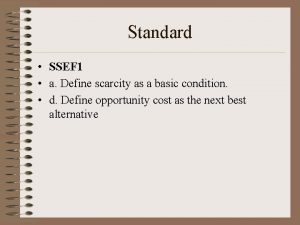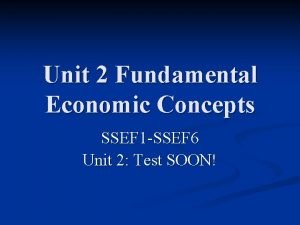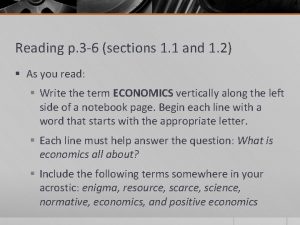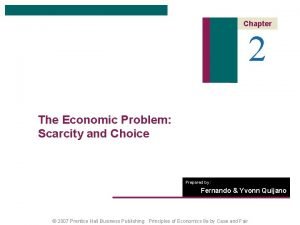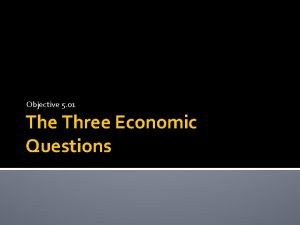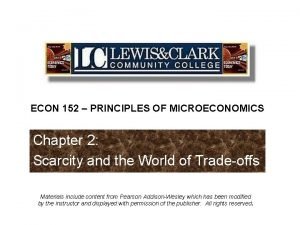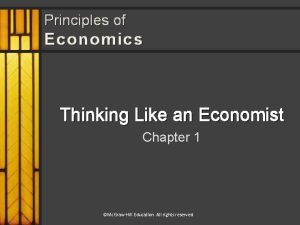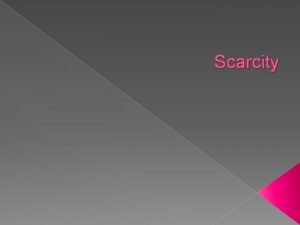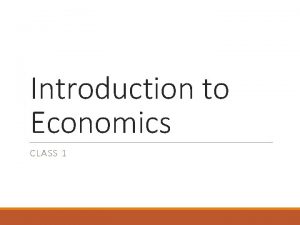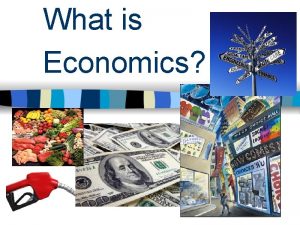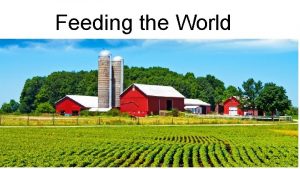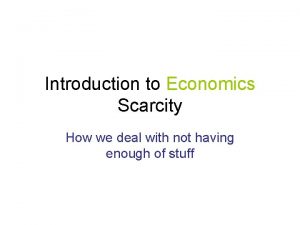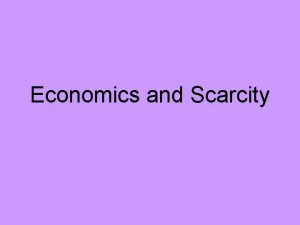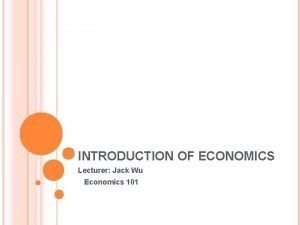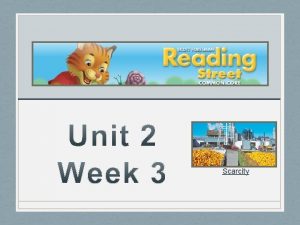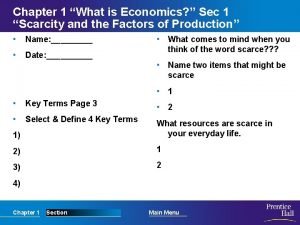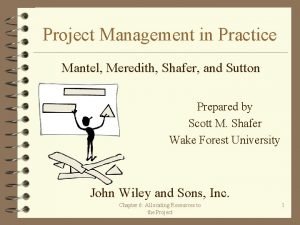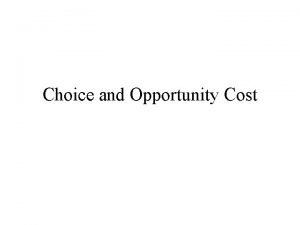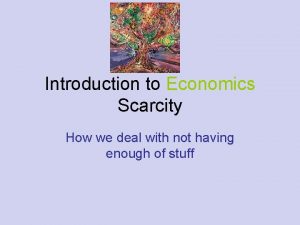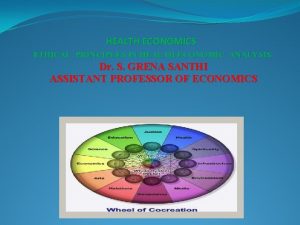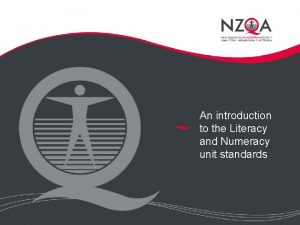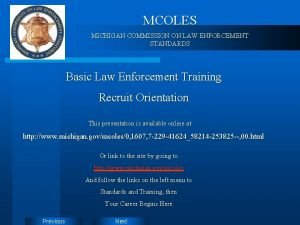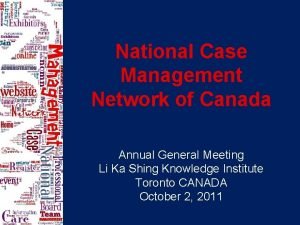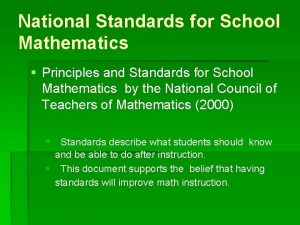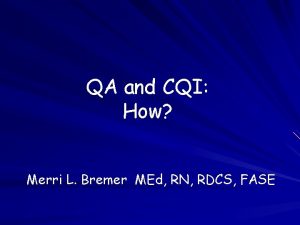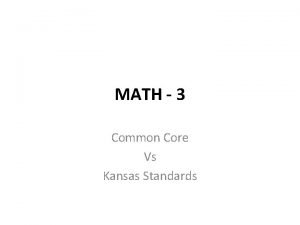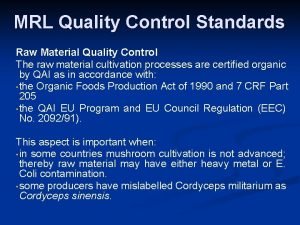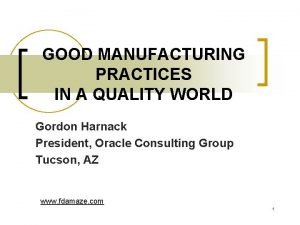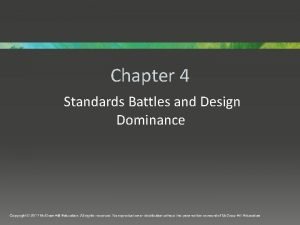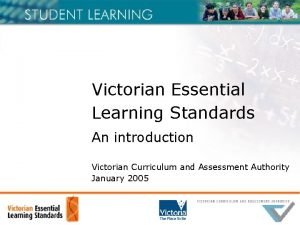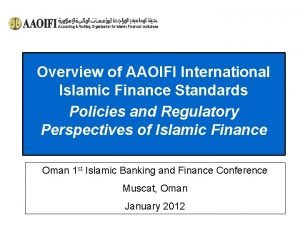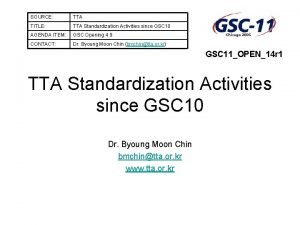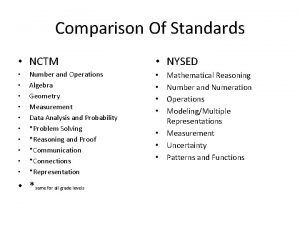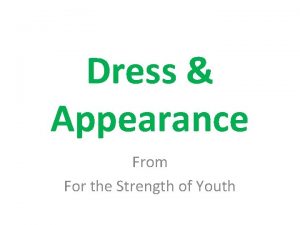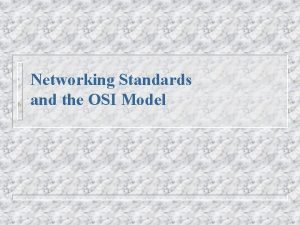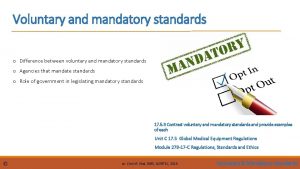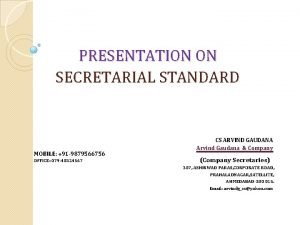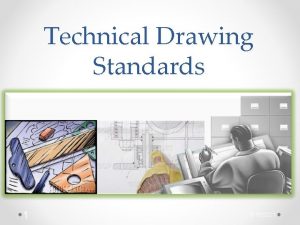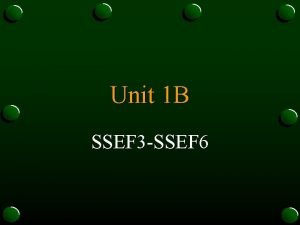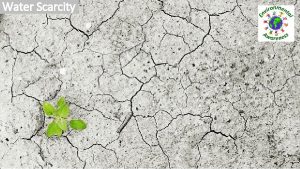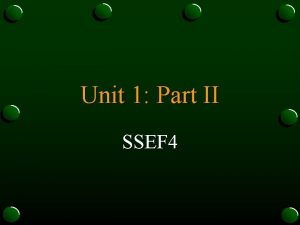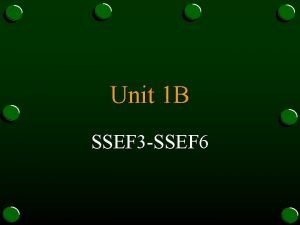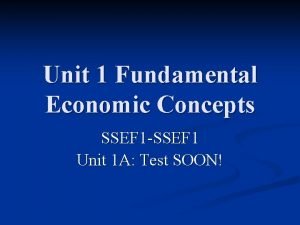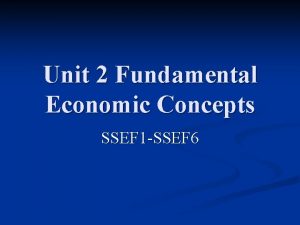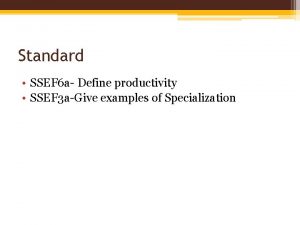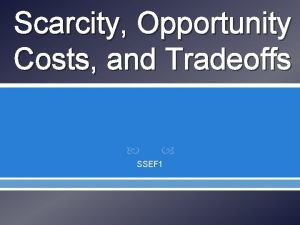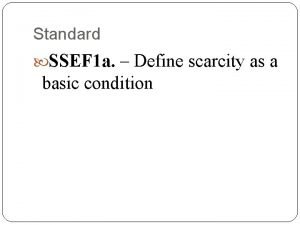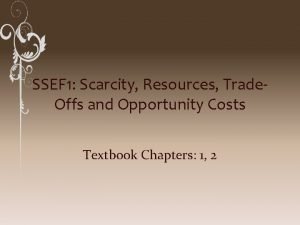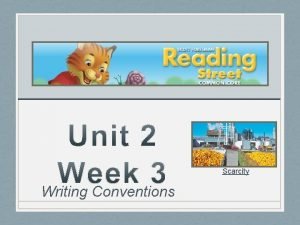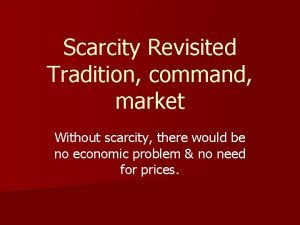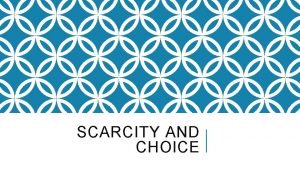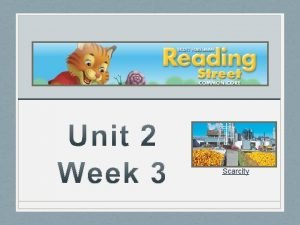Standards SSEF 4 SSEF 5 SSEF 6 Scarcity






































































- Slides: 70

Standards SSEF 4, SSEF 5, SSEF 6

• Scarcity forces economic systems to answer 3 basic questions. • 1) What to produce: (What should we make with our limited resources) • 2) How to produce (How will we make our products) • 3) For whom to produce (Who will get the stuff we make)

Types of economic systems: 1)Traditional 2)Command 3)Market (capitalist) or (free enterprise) 4)Mixed Each System answers the basic economic questions differently.

Traditional Economy (T) • In a traditional economy, WHAT, HOW, and FOR WHOM are determined by custom. • Examples include the Australian Aborigines, and northern Canada’s Inuits.

Traditional Economy (T) • The good: Everybody’s role is clearly defined. • The bad: No new technology. • The ugly: Low standard of living.

Command economy (C) • In a command economy, a central authority determines WHAT, HOW, and FOR WHOM to produce. • Close Examples: North Korea, Cuba, the former Soviet Union.

Command Economy (C) • The good: Everybody gets resources and is treated equally. • The bad: No incentive to work hard, causes low production and poor standard of living • The ugly: Have failed because of poor government decision making and no incentives

Market Economy (MKT) • In a market economy, WHAT, HOW, and FOR WHOM are determined only by consumers and producers operating on supply and demand with no government interference. • Close Examples: Hong Kong, Singapore • Market Rankings

Market Economy (Mkt) • The good: Consumers get the best product for the best price. • The bad: People with no resources are left out. • The ugly: There is no government to help in a pinch.

Mixed (MIX) • In a market economy, WHAT, HOW, and FOR WHOM are determined by consumers and producers, but their decisions are somehow limited by a central authority. • Examples: United States…. . and every other major country in the world

Mixed Market (MIX) • The good: Offers people incentive for profit, but government can still help out. • The bad: Can’t keep all profits. Won’t be totally equal. • The ugly: What you don’t like about the US

Private Ownership • Describes: Can you own your own property such as a business, home or car? Can you have ownership of your new ideas or inventions?

Private Ownership • T: Depends on community values. • C: None, the government owns all the means of production. • MKT: All, Private individuals own everything, not even roads or schools are government owned. • MIX: Individuals have Most ownership, but the government may own things such as national parks or elementary schools.

Profit Motive • Describes: Is there an incentive for you to make financial gain?

Profit Motive • T: Some, but you may share your profits with the village. • C: None, no incentive to work hard, the government will redistribute your gains to others. • MKT: Extreme, You keep everything you make. You don’t make, then you starve. • MIX: A lot, Individuals get to keep most profits, but have to pay some taxes on them.

Consumer Sovereignty • Describes: Do the desires of buyers determine what producers make?

Consumer Sovereignty • T: Little, buyers are not often exposed to new innovations. • C: None, the government chooses to distribute the goods it wishes. • MKT: Extreme, Buyers are free to purchase any product a producer comes to market with. • MIX: A lot, Buyers are generally free to buy, but government may make some purchases illegal or mandatory.

Competition • Describes: Is there rivalry among sellers trying to compete for the consumer’s money and make profit?

Competition • T: Little, The small economy has little options. • C: None, none government is the sole provider • MKT: Extreme, Producers must offer the best product for the best price, or they won’t sell. However, it is possible for a producer to establish a monopoly. • MIX: A lot, government rarely interferes with competition, but may guarantee an exclusive right to sell a certain product through a patent.

Government Regulation • Describes: How many restrictions, laws, or rules the government places on buying and selling.

Government Regulation • T: Usually A lot, A tribal chief may set rules for the community. • C: Total, Government runs the show. • MKT: None, Buyers and sellers have no restrictions. • MIX: Some, government often makes rules for safety and efficiency and to protect against discrimination or inadequate competition.

• b. Analyze how each type of system answers the three economic questions and meets the • broad social and economic goals of freedom, security, equity, growth, efficiency, price • stability, full employment, and sustainability.

Economic Freedom • Ability of people to make their own decisions like where to work, how to use their money, or whether to start a business.

Economic Freedom • T: Little, one only has the access to do what his ancestors did. • C: None, Government assigns occupations and controls spending and incomes. • MKT: Total, Individuals are free to enter and leave the marketplace or an occupation as they please. • MIX: A lot, Government has the ability to tax or ban certain occupations, but the economy is mostly free.

Economic Security • Protecting people against uncertain risks such as injury, job loss, or loss of income.

Economic Security • T: Depends on the traditions or customs. • C: A lot, Government will take resources from others to give to the most needy. • MKT: None, There is no government to provide assistance in times of need. • MIX: Some, Government may decide to offer assistance such as social security, medical assistance, or food.

Equity • Providing the same opportunities, the same resources, or the same outcomes for individuals in society.

Equity • T: Depends on the traditions or customs. • C: Almost total, It is the goal of the command economy that all get what they need. Resources are redistributed equally. • MKT: None. The strong survive and prosper. Poverty can be a major problem. • MIX: Some, government often establishes laws against discrimination, offers financial aid to the disadvantaged and tax people with lower incomes less than the rich.

Economic Growth • Increasing the production of goods and services overtime thus allowing for an increased standard of living for the society.

Economic Growth • T: None. Using the same methods as the past, the economy is stagnant. • C: Not much, Government often makes decisions to spark temporary growth but it is unsustainable. • MKT: A lot, businesses have to find ways to grow to survive. • MIX: The most, government can help private businesses and the economy grow with good fiscal policy.

Efficiency • How well scarce input resources are used to avoid waste and maximize societal use.

Efficiency • T: Some, Lack of technology hinders, but usually don’t produce what they don’t need • C: Nope, Government officials often do a poor job allocating resources and when they mess up setting prices there are shortages or excess resources left over. • MKT: Very Efficient. If a private company wastes resources they will lose money, go out of business and be replaced by an efficient one • MIX: Very Efficient. Private decision making plus government can make rules about saving resources.

Price Stability • Money doesn’t tremendously lose its value to purchase goods.

Price Stability • T: Fairly Stable. • C: Great, Government keeps prices stable. • MKT: Poor, prices can vary widely and inflation or interest rates can cause problems. • MIX: Good, Government can make rules about interest rates and prices if problems occur.

Full employment • Occurs when a society’s scarce resource of labor is utilized. Everyone that has skills and wants a job can get one.

Full Employment • T: Decent, Since birth, people know what job or role they will play in the economy. • C: Great, Government makes sure that everyone has a job. • MKT: Poor, Those that lack ability do not have jobs. • MIX: Sometimes, The economy has its ups and downs called the business cycle.

Sustainability • The economy has the ability to prosper and grow long term.

Sustainability • T: Poor, Will get replaced by those using technology. • C: Terrible, Poor government decision making and lack of incentive have caused failure. • MKT: Poor, government cannot provide things like National Defense. • MIX: Good, creates the optimal balance of free market and government control.

• Economies have to decide how to allocate (distribute) the resources they have. • Some ways in include: • 1) Price – The more a consumer is willing and able to pay for the product, the more he is likely to get it. If resources are really scarce, the price will be really high. • Price is the most utilized method in our economy and the market economy.

• 2) Majority Rule: What the most people vote for decides who gets the resources. This can take advantage of minorities. • 3) Contest: Whoever wins the contest gets the resource. Ex: Knights jousting for the princess • 4) Force: Whoever is strong enough, takes the stuff he wants. Ex: A society without police

• 5) Sharing: Everybody gets some. Ex. A command economy & kindergarten • 6) Lottery: Whoever wins the drawing gets the stuff, total chance. Ex. Hunger Games, Pick 5 • 7) Authority: Whoever is in charge decides how the resources are distributed. Ex. An absolute monarch or dictator

• 8) First-come-first-served: You show up first you get it. Ex: People camping out in order to get the privilege to get something • 9) Personal characteristics: Those who have a certain trait get the resource. ex: A teacher giving all the good grades to blue-eyed students

• The government has to provide public goods and services because they are societal needs, but often not provided by producers because they are unprofitable to make. • Public goods are goods or services that everyone can share and it does not take away from others when they do. • Public Goods include fire and police protection, the military, clean air, schools, and roads.

• Unlike a true market economy, the Government may own things in the US like schools, post offices, and parks. • Government redistributes income, taking money from those with wealth (taxes) and giving it to those without (welfare programs). • This helps the government provide equity and for the needs of the poor and keeps them from rebelling.

• People pay social security and this is redistributed to retirees and some with special needs. • The rich pay a greater portion of their income so that we can have public goods and services.

Protection of Property Rights • The ability to own property creates incentive to be productive in the US economy. • To protect these rights, government makes laws to guarantee ownership. • The legal system enforces property contracts between individuals.

• Government grants patents to give entrepreneurs the exclusive right to produce an invention/product for a certain number of years. • Patents are important because they give entrepreneurs the incentive to innovate for profit and advance technology in society. • Copyrights are granted for songs, books, and creative work. • Yeti Patents • US Patent Office

• The US government resolves market failures. • A market failure is a situation in which the allocation of goods and services is not efficient.

Market Failures • May happen when there is 1. Inadequate competition (monopolies) 2. Lack of reliable information 3. Resource immobility 4. Negative Externalities (costs incurred by individuals who were not part of the buying and selling of a good) 5. A need for public goods

Inadequate Competition • The government may use anti-trust laws to break up monopolies. • Monopolies are businesses that have total control of a product and the price they offer. • AT & T was deemed a monopoly and was split in 1984.

Lack of Reliable information • Happens if people are unaware of job opportunities, prices of products, or consequences of actions. • Government posts employment positions. • http: //yadayadaecon. com/clip/23/ » The Rental Car

Resource Immobility • Resource immobility occurs when land, capital, labor, and entrepreneurs stay within a market where returns are slow and sometimes remain unemployed. • Government moved to fix I-85 so resources could move through.

Negative Externalities • Occur when one party benefits unfairly at another’s expense. • Ex. A company dumps excess waste in a river to save money and someone eats contaminated fish. Therefore, the EPA would fine the company. • Anchor Man

• Government encourages positive externalities such as education. When one receives education, he is able to use his talents to benefit others. • In California, government requires all houses to have fire sprinklers, neighbors benefit from the purchase of sprinklers as a fire poses less of a risk.

Public Goods • Products that are collectively consumed by everyone, and whose use by one individual does not diminish the satisfaction of others. • Are provided by government because they are unprofitable for private businesses to produce.

• When the government decides to regulate (place rules) on the economy, there always positive and negative effects. • Usually government regulation causes higher input costs for producers who have to ensure that their product meets the rules. • Society and consumers often get safer products, but have to pay higher prices because the producer passes on the costs to them.

Example • Government forces car manufacturers to do numerous crash tests on their cars and include certain safety features. • The car company has to spend money on designing, implementing new features, and destroying cars to comply with regulations. • Therefore, the company has to raise the price of its cars in order to pay for its costs. • Consumers get safer cars, but must pay more for them.

Example 2 • • Government places taxes on cigarettes. Positives: Fewer purchases result in fewer cancer issues. Government related healthcare costs go down. Negatives: Costs go up for the consumer. Job loss in the cigarette businesses.

Example 3 • Government requires a doctor to have a license that requires him to have a certain amount of education. • Negatives? • Positives?

Deregulation • When government decides that the rules they have placed on the economy are no longer beneficial, they may deregulate (remove the policies they formally made). • Deregulation usually takes costs off producers and therefore makes things cheaper for consumers. However, a level of consumer safety is often removed. • Deregulation also has positive and negative effects.

Example of Deregulation • Before the 1970’s government regulated airline prices and services, consumers were frustrated with both, but the airlines made money. • Jimmy Carter deregulated the industry forcing the airlines to compete for consumer business. • Results: some airlines go bankrupt, consumers get better services

• Investment- using resources that could bring immediate benefit for the purpose of gaining greater benefit overtime. . • Productivity is the rate at which goods and services can be produced

• Economic growth occurs when a society produces more things that people want and improves its members’ standard of living. • In order for a society to grow it must increase productivity- output of products/input of products. • It must produce more output per unit of resources it uses, input.

Productive is Less of This More of This

How can we increase economic growth and productivity? • The key to economic growth is capital investment- using some of a economy’s profits to buy new machines and equipment, to research and implement new technologies and to improve education in the workforce.

Physical Capital Examples A farmer investing in new irrigation equipment is able to produce a better crop. A oil/gas company may buy new oil rigs that are able to access deep water drilling spots.

Human capital • Human capital – an investment in people. • Ex. a business pays for an employee’s health insurance, tuition to go back to school, training or time off. • A person invests in his own education. • A police department investing in training its force is able to arrest more criminals. • A medical company investing in research may produce a new drug to cure a disease.

• Efficient investment in capital can cause the production possibilities curve to shift outward. • Companies with the most educated, healthy, and motivated workers tend to make the most profit.

• Individuals may also make educational investments to improve standard of living. • Standard of living- the level of wealth, comfort, material goods, and necessities available to an individual. • A teacher may spend 10, 000 dollars in tuition and 1 year taking classes in order to get paid 15% more for a master’s degree. • A personal trainer may take classes so that he can get certification in order to train more clients.

Advanced education • According to the US Census Bureau workers in the US in 2010 made per year • No high school diploma: $18, 747 • High School diploma: $27, 915 • Bachelor’s Degree: $51, 206 • Advanced Degree: $74, 602
 Ssef price list
Ssef price list Ssef price list
Ssef price list Ssef categories
Ssef categories Broward county science fair
Broward county science fair Scarcity forces tradeoffs
Scarcity forces tradeoffs Ricardian rent
Ricardian rent The basic economic problem results from scarcity
The basic economic problem results from scarcity Resources scarcity
Resources scarcity The economic problem of scarcity
The economic problem of scarcity Three basic questions of scarcity
Three basic questions of scarcity Scarcity
Scarcity Entrepreneurship 3209
Entrepreneurship 3209 Relationship between economics and scarcity
Relationship between economics and scarcity The cost-benefit principle predicts that a person:
The cost-benefit principle predicts that a person: Scarcity lesson plan
Scarcity lesson plan Resources scarcity
Resources scarcity Scarcity, choice and opportunity cost example
Scarcity, choice and opportunity cost example Mixed economy political cartoon
Mixed economy political cartoon What economics is
What economics is Scarcity
Scarcity Picture of scarcity
Picture of scarcity Def of scarcity
Def of scarcity Economics
Economics Resources scarcity
Resources scarcity Scarce sentence
Scarce sentence Chapter 1 section 1 scarcity
Chapter 1 section 1 scarcity Scarcity definition economics
Scarcity definition economics Resources scarcity
Resources scarcity Forces us to make choices.
Forces us to make choices. Market
Market Causes of scarcity
Causes of scarcity Resources scarcity
Resources scarcity Hard customer defined standards
Hard customer defined standards Unit standard 26622
Unit standard 26622 Michigan mcoles test
Michigan mcoles test Understanding standards sqa
Understanding standards sqa Canadian standards of practice for case management
Canadian standards of practice for case management Principles and standards for school mathematics
Principles and standards for school mathematics Army cadet force values and standards powerpoint
Army cadet force values and standards powerpoint Icael standards
Icael standards Pmp gold plating
Pmp gold plating Math standards kansas
Math standards kansas Isometric exercise strengthens muscles without __________.
Isometric exercise strengthens muscles without __________. Nutrition tools standards and guidelines
Nutrition tools standards and guidelines Mymajorhealth
Mymajorhealth Standards and interoperability framework
Standards and interoperability framework Independent press standards organisation
Independent press standards organisation Raw material standards
Raw material standards Apa itu gmp
Apa itu gmp Cenelec 50126
Cenelec 50126 Standards battles and design dominance
Standards battles and design dominance Pa writing standards
Pa writing standards Java code review checklist
Java code review checklist Isbe pe standards
Isbe pe standards Victorian essential learning standards
Victorian essential learning standards Northstar digital literacy
Northstar digital literacy List of aaoifi standards
List of aaoifi standards Ccqi perinatal standards
Ccqi perinatal standards Danielson framework summary
Danielson framework summary Tta standards
Tta standards Nctm standards
Nctm standards Georgia energy efficiency standards
Georgia energy efficiency standards Cenelec railway standards
Cenelec railway standards Efy dress standards
Efy dress standards Early years teacher standards
Early years teacher standards Network communication models
Network communication models Social emotional learning standards washington state
Social emotional learning standards washington state Voluntary standards examples
Voluntary standards examples Secretarial standard 4
Secretarial standard 4 Technical drawing terms
Technical drawing terms As1428.1 stairs
As1428.1 stairs
